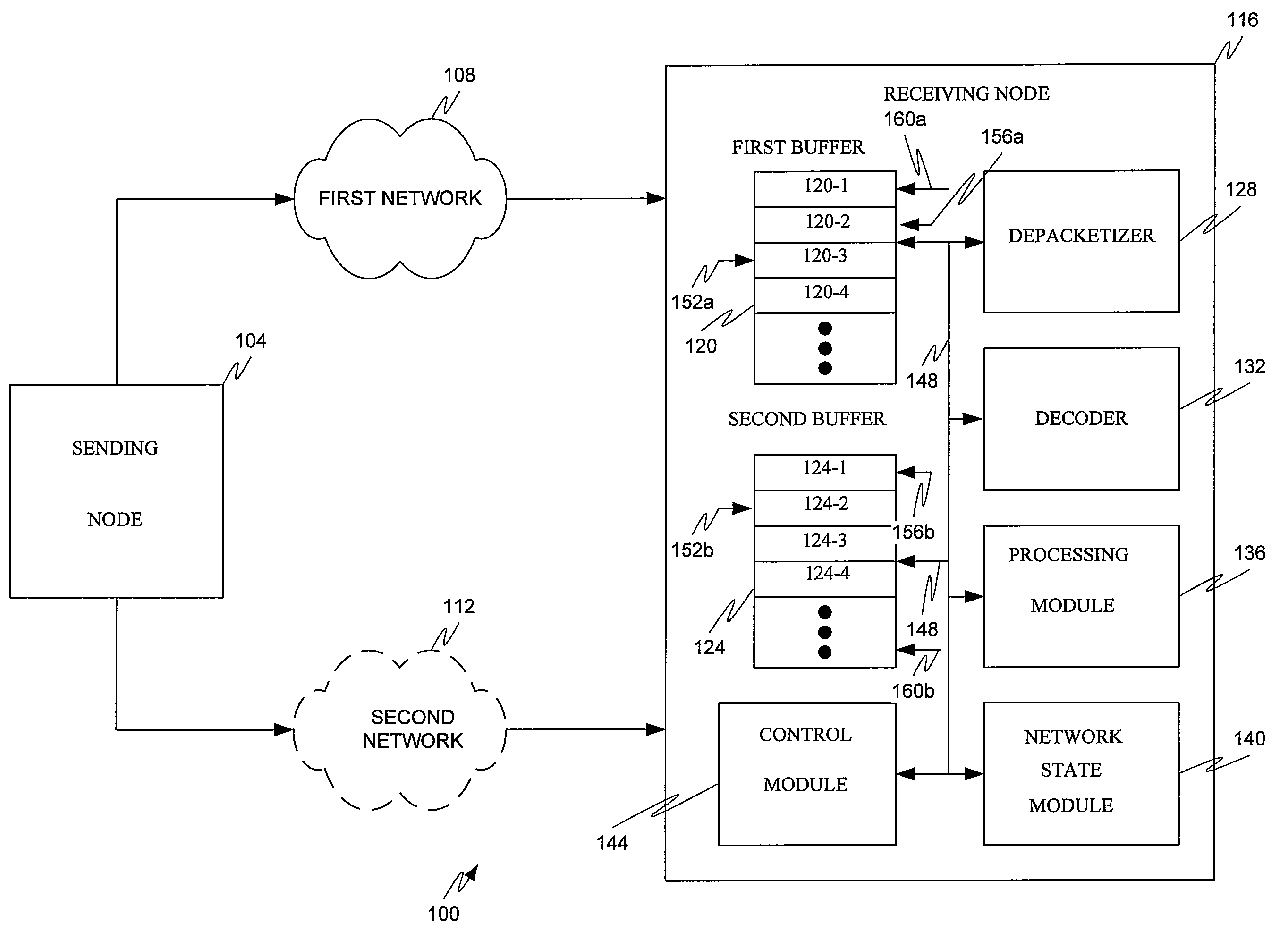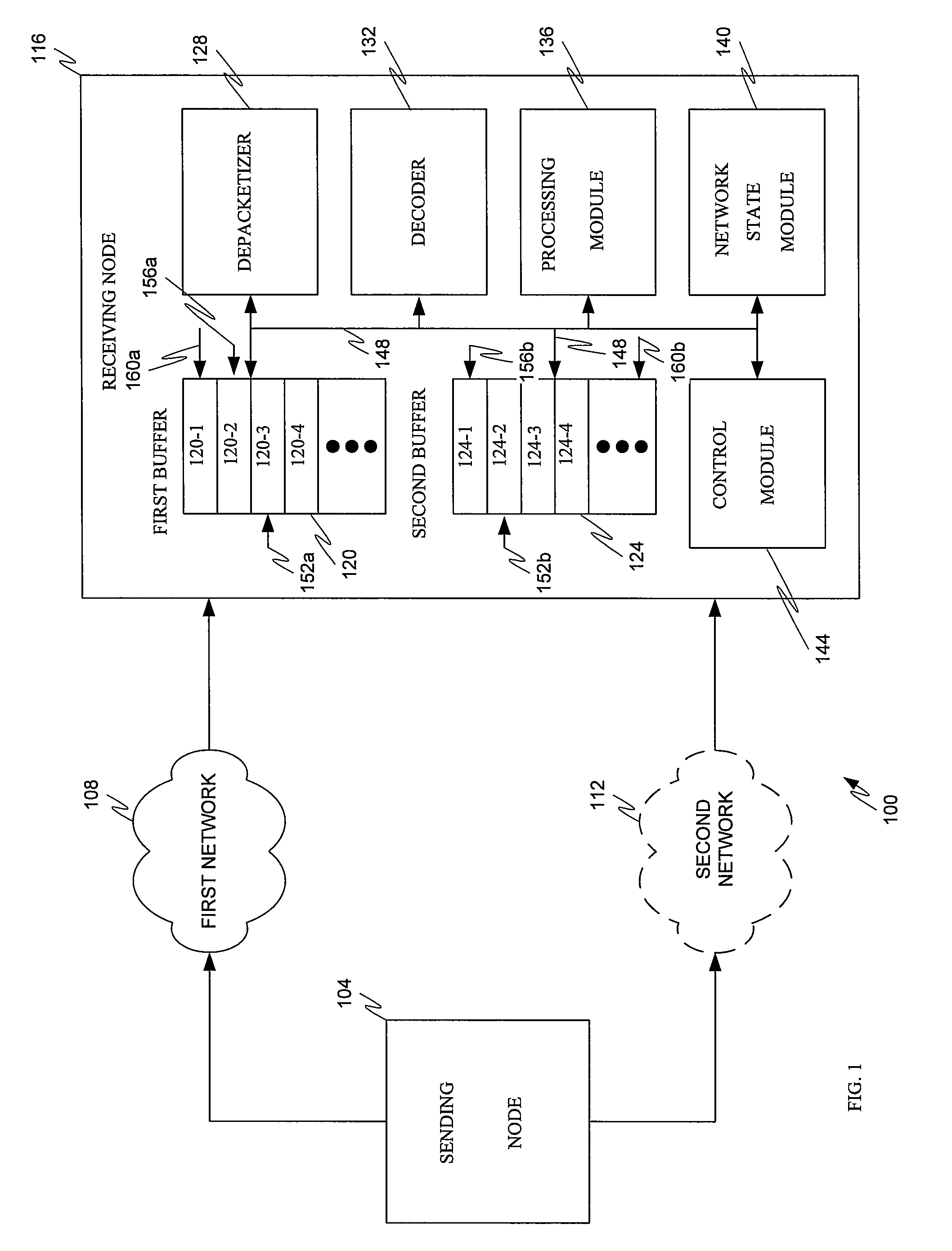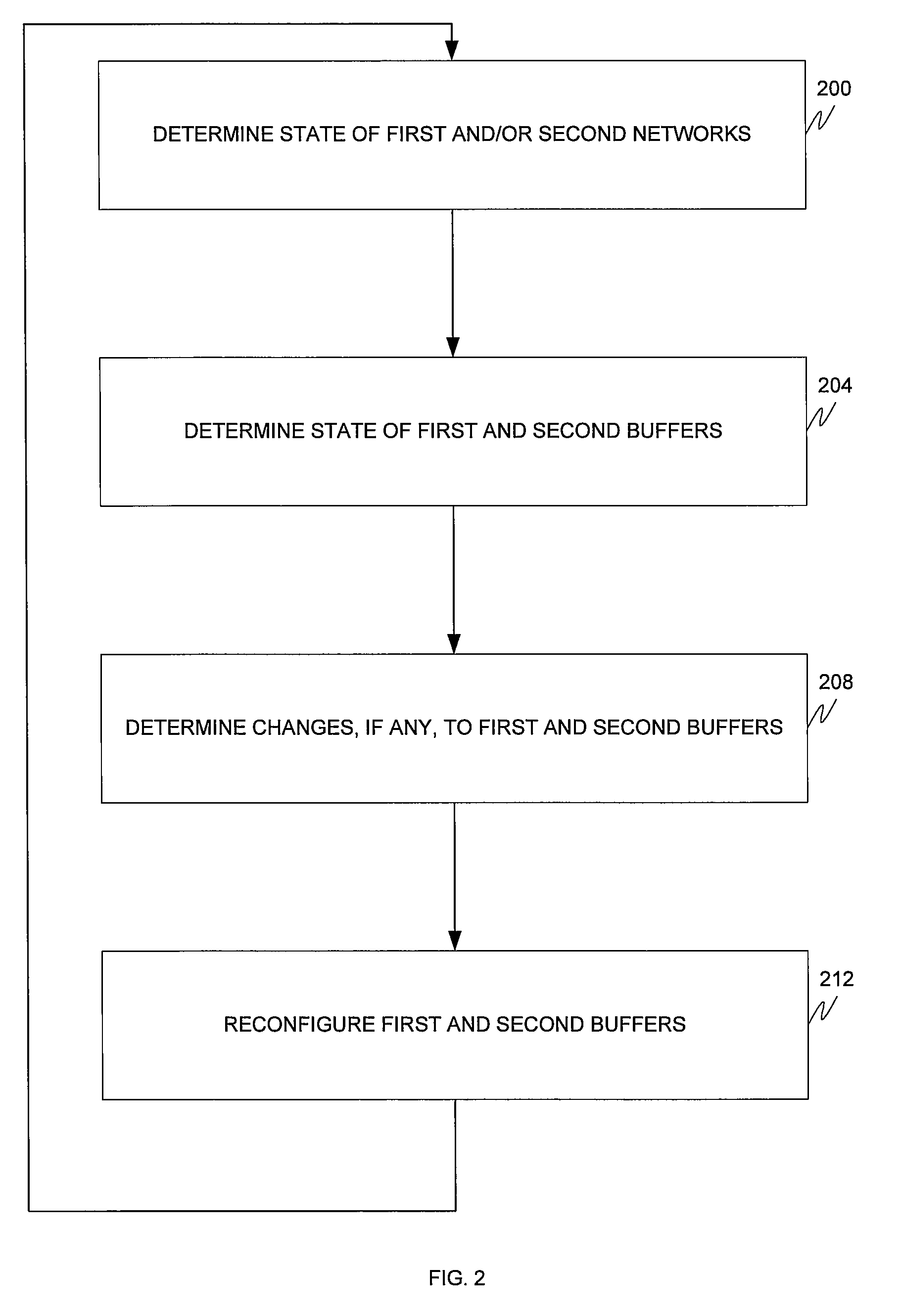Dynamic buffering and synchronization of related media streams in packet networks
a technology of dynamic buffering and related media, applied in data switching networks, frequency-division multiplexes, instruments, etc., can solve problems such as packet corruption errors, packet jitter, delay, packet drop, etc., to achieve more efficiently and effectively manage packet jitter, latency, loss, and/or synchronization
- Summary
- Abstract
- Description
- Claims
- Application Information
AI Technical Summary
Benefits of technology
Problems solved by technology
Method used
Image
Examples
Embodiment Construction
[0038]Referring to FIG. 1, a first embodiment of the invention will be described.
[0039]The system 100 includes a sending node 104 in communication, via first and (optional) second networks 108 and 112 respectively, with a receiving node 116. The receiving node 116 includes a number of components, including first and second buffers 120 and 124 respectively, depacketizer 128, decoder 132, processing module 136, network state module 140, and control module 144, all in communication by way of a bus 148. As will be appreciated, in a full duplexed communication session both of the nodes will be sending and receiving packets and, therefore, both will have these components.
[0040]The sending and receiving nodes 104 and 116 can be a variety of communication devices. Exemplary communication devices include Voice over Internet Protocol (“VoIP”) devices (such as IP softphones and hardphones), switches, media servers, routers, session border controllers, and gateways (e.g., security and port gate...
PUM
 Login to View More
Login to View More Abstract
Description
Claims
Application Information
 Login to View More
Login to View More - R&D
- Intellectual Property
- Life Sciences
- Materials
- Tech Scout
- Unparalleled Data Quality
- Higher Quality Content
- 60% Fewer Hallucinations
Browse by: Latest US Patents, China's latest patents, Technical Efficacy Thesaurus, Application Domain, Technology Topic, Popular Technical Reports.
© 2025 PatSnap. All rights reserved.Legal|Privacy policy|Modern Slavery Act Transparency Statement|Sitemap|About US| Contact US: help@patsnap.com



